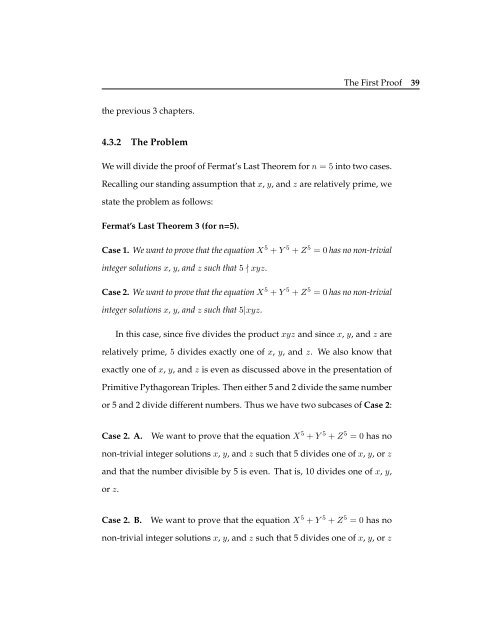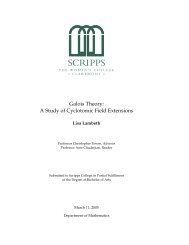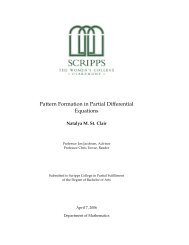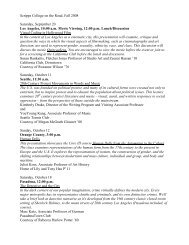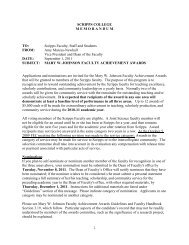Sophie Germain: mathématicienne extraordinaire - Scripps College
Sophie Germain: mathématicienne extraordinaire - Scripps College
Sophie Germain: mathématicienne extraordinaire - Scripps College
You also want an ePaper? Increase the reach of your titles
YUMPU automatically turns print PDFs into web optimized ePapers that Google loves.
The First Proof 39<br />
the previous 3 chapters.<br />
4.3.2 The Problem<br />
We will divide the proof of Fermat’s Last Theorem for n = 5 into two cases.<br />
Recalling our standing assumption that x, y, and z are relatively prime, we<br />
state the problem as follows:<br />
Fermat’s Last Theorem 3 (for n=5).<br />
Case 1. We want to prove that the equation X 5 + Y 5 + Z 5 = 0 has no non-trivial<br />
integer solutions x, y, and z such that 5 ∤ xyz.<br />
Case 2. We want to prove that the equation X 5 + Y 5 + Z 5 = 0 has no non-trivial<br />
integer solutions x, y, and z such that 5|xyz.<br />
In this case, since five divides the product xyz and since x, y, and z are<br />
relatively prime, 5 divides exactly one of x, y, and z. We also know that<br />
exactly one of x, y, and z is even as discussed above in the presentation of<br />
Primitive Pythagorean Triples. Then either 5 and 2 divide the same number<br />
or 5 and 2 divide different numbers. Thus we have two subcases of Case 2:<br />
Case 2. A.<br />
We want to prove that the equation X 5 + Y 5 + Z 5 = 0 has no<br />
non-trivial integer solutions x, y, and z such that 5 divides one of x, y, or z<br />
and that the number divisible by 5 is even. That is, 10 divides one of x, y,<br />
or z.<br />
Case 2. B.<br />
We want to prove that the equation X 5 + Y 5 + Z 5 = 0 has no<br />
non-trivial integer solutions x, y, and z such that 5 divides one of x, y, or z


